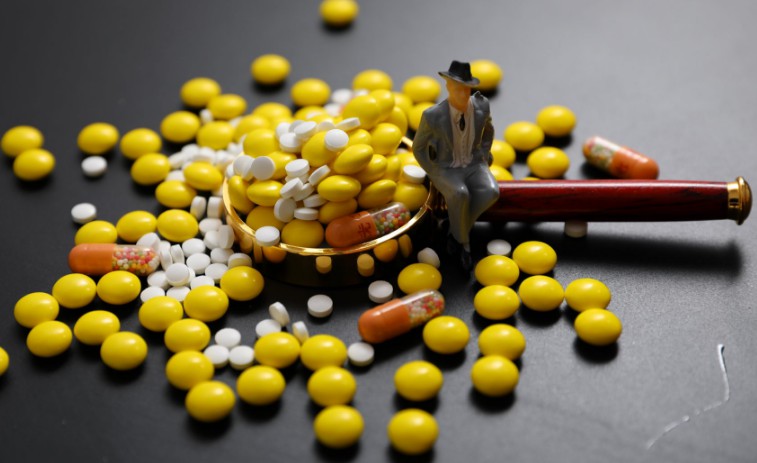On August 9, the National Medical Insurance Administration clearly stated in its response to the recommendation No. 4126 of the Fourth Session of the 13th National People’s Congress: At present, Qinghai Province, Zhejiang Jinhua, Henan Puyang and other places have targeted some types of Chinese patent medicines that are in high demand and high in value. The exploration of centralized procurement has been carried out, and positive results have been achieved. In the next step, the National Medical Insurance Administration will work with relevant departments to improve the quality evaluation standards of Chinese patent medicines and formula granules, adhere to quality first, be clinically demand-oriented, start with high-priced and large-volume varieties, and scientifically and steadily promote Chinese patent medicines and formula granules. Centralized procurement reform.
Formula particles should also be included. Collecting mining to explore the way or zoom in the footsteps. What touches the sensitive nerves of the industry is that the National Medical Insurance Administration made a special latest statement on the collection of formula granules this time.
In fact, there are clues in the local area: on July 27, the four departments of Hainan Province jointly posted the "Implementation Rules for the Management of Traditional Chinese Medicine Formula Granules in Hainan Province (for Trial Implementation)" and proposed to establish a Chinese medicine prescription granule section on the provincial drug procurement platform.

formulate and publish it The corresponding bidding rules. Starting from November, Chinese medicine formula granules used in public hospitals should be purchased through provincial procurement platforms, online transactions, offline transactions, and purchases of enterprises and varieties that have not been filed by the Provincial Food and Drug Administration are prohibited.
The formula particles are only representative. According to the National Medical Insurance Administration’s response to Recommendation No. 4126, the new policy of “exploring the merger of different generic drugs with similar indications or functions and indications to carry out centralized and volume procurement” has provided basic compliance for the centralized procurement of proprietary Chinese medicines.
Just last week, the “Notice on Several Policies Supporting the Development of Traditional Chinese Medicine in Sichuan” issued by the Sichuan Provincial Medical Insurance Bureau also attracted the attention of the industry. The document clearly mentioned the use of provincial or inter-provincial regional alliances in promoting the reform of Chinese medicine service prices. Promote the high-quality development of Chinese patent medicine manufacturing enterprises by carrying out mass procurement of Chinese patent medicines as a basis.
In other words, although the national level has not fully promoted the inclusion of proprietary Chinese medicines in the national procurement sequence, local provincial centralized procurement has become a test field for the implementation of centralized procurement of Chinese patent medicines. Since 2020, different alliances have been implementing centralized procurement of pharmaceuticals. In April this year, Guangdong took the lead in the centralized procurement of medicines in the 16-province alliance involving dozens of proprietary Chinese medicines. This means that the province-regional alliance of proprietary Chinese medicines is gradually expanding the scope of centralized procurement.
In contrast, the early explorations in Qinghai, Jinhua, Zhejiang and other places, such as Qinghai's approach is to include the varieties of Chinese patent medicines, and there are 3 or more declared companies. After comprehensive scoring based on the company's product quality, reputation, service, and price indicators, The highest score is the winner, and the second score is the candidate; if the applicant company is less than 2 (including 2), the expert team will combine its indications, functional effects and whether there are alternative varieties to demonstrate whether it is clinically necessary. Refer to the current national minimum procurement The price is negotiated with the company, and the bid is selected, and no agreement is reached; for Shanghai, the index of Chinese patent medicine highlights the product quality and the scale of the company, accounting for nearly half of the weight, especially the product quality. Class new drugs accounted for 25 points. Coupled with the quality control of raw materials and other factors, the Shanghai path of centralized procurement of Chinese patent medicines is also in the exploratory stage.
Judging from the continuous release of signals from the National Medical Insurance Bureau that proprietary Chinese medicines are entering centralized procurement, industry insiders believe that footsteps can be heard in the large-scale centralized procurement of proprietary Chinese medicines.
Chinese patent medicine high-end race
Re-evaluation of listing is particularly important
Whether at the national level or local exploration, it reflects the status quo of the Chinese medicine industry to some extent, that is, while fully supporting the integrity and innovation of the Chinese medicine industry, it is also facing challenges brought about by the new access policies such as centralized procurement.
The latest data from Minai.com shows that in the first quarter of 2021, the sales of proprietary Chinese medicines in public hospitals in key cities rose by 29.33% year-on-year. Cardiovascular and cerebrovascular disease drugs are still the top-selling category, and there are 5 categories including pediatric drugs and qi and blood drugs. Increased by more than 50%, and many of them are exclusive products.

However, from the perspective of sales growth, only three of the TOP20 products in 2020 will have positive growth. In 2020, the market sales of proprietary Chinese medicines in public hospitals in key cities will reach nearly 30 billion yuan, a year-on-year decline of more than 10%. In addition, in 2020, 22 of the nearly 70 A-share Chinese medicine companies have achieved positive growth in total revenue and 42 have achieved positive growth in net profit. However, from the perspective of R&D investment, only 23 Chinese medicine companies have R&D expenses exceeding 100 million yuan.
How to break the situation is also a test that many Chinese patent medicine and formula granule companies must face in the context of centralized procurement.
"It is urgent to re-evaluate Chinese patent medicines on the market." Earlier, industry experts shouted at a traditional Chinese medicine innovation conference. Because the number of clinical cases of pre-marketing drugs is limited, the time is short, the number of cases is small, and there are certain limitations. Various situations will arise and will be more complicated. For example, doctors prescribe drugs based on the instructions, but patients may use them beyond the instructions to bring medication safety risks. The core of the evaluation of Chinese medicines after they are marketed is to find more convincing evidence to support the precise clinical positioning of Chinese patent medicines.

It is true that market forces have forced many brand companies to accelerate the secondary development of traditional products. For example, on the one hand, Tongrentang conducted secondary scientific research on classic famous prescriptions and famous drugs, carried out studies on the anti-tumor mechanism of Xihuang Pills, and expanded clinical applications such as Jiawei Xiaoyao Pills, and formed systematic and detailed scientific research data to provide scientific research for clinical drug use. Support. On the other hand, it continues to carry out the optimization of varieties and processes and the improvement of standards, and optimize the technology of varieties such as Ganmao Soft Capsule and Liuwei Dihuang Pills. Start the study on the clinical effectiveness and safety of Wuji Baifeng Pills in the treatment of hyperuricemia, laying the foundation for increasing indications for subsequent varieties.
In addition, the secondary development of Baiyunshan Banlangen Granules has achieved new breakthroughs, including the clinical research of Guilingji in the treatment of mild to moderate cognitive dysfunction in the elderly, and the clinical biological research of Dingkun Dan in the treatment of polycystic ovary syndrome, etc. In full swing. Experts generally believe that the secondary development of Chinese patent medicines can realize the quality control of the whole production process of medicines from raw materials to preparations.
Nevertheless, the establishment of a centralized procurement management model that meets the unique attributes of traditional Chinese medicine is still a big hurdle for the industry. It is necessary to scientifically and rationally carry out the centralized procurement of proprietary Chinese medicines, but also to promote and support the inheritance and innovative development of traditional Chinese medicine. Perhaps this is the national medical insurance. The true connotation of the four-character "scientific and sound" key mentioned by the Bureau at the end.
Post time: Sep-01-2021

